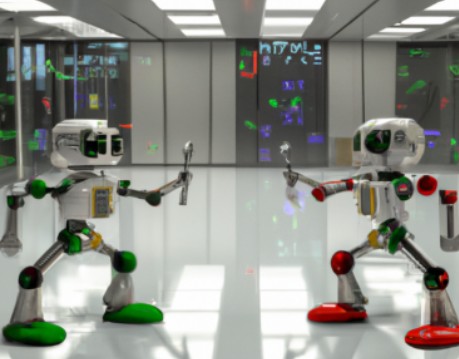Chatbot Search Wars Intensify with Google’s Bard and Microsoft’s Unveiling of AI-powered Bing

Google has officially thrown its hat into the chatbot ring with the unveiling of Bard, its answer to OpenAI’s ChatGPT.
“Bard seeks to combine the breadth of the world’s knowledge with the power, intelligence, and creativity of our large language models,” wrote Google CEO Sundar Pichai in a blog post. “It draws on information from the web to provide fresh, high-quality responses. Bard can be an outlet for creativity, and a launchpad for curiosity, helping you to explain new discoveries from NASA’s James Webb Space Telescope to a 9-year-old, or learn more about the best strikers in football right now, and then get drills to build your skills.”
ChatGPT, launched in November, has become a household name and gained millions of users since OpenAI made it available to the public. Microsoft recently invested $10 billion into a third-round partnership with OpenAI, and Google is said to have declared a “code red” since Microsoft announced intentions to incorporate ChatGPT within its Google Search rival, Bing. One might wonder if Bard’s pithy name — four-lettered, singularly syllabic, and beginning with a B — is also a response to the threat of an AI-powered Bing.
That threat will soon become a reality. Microsoft held a surprise event today at its Redmond HQ where it announced the coming availability of an AI-powered Bing. The new Bing experience is a culmination of several technical breakthroughs, the company said in a blog post, including a new, next-generation OpenAI LLM that is more powerful, fast, and accurate than ChatGPT and is customized specifically for search. In addition to a new user experience and the application of the AI model to Bing’s core search engine, Microsoft also claims to have developed a proprietary method of monitoring the training and development of OpenAI’s model, which it says gives more relevant, timely, and targeted results.
Pichai announced his company will initially roll out Bard with a lightweight model version of its LaMDA conversational AI model. LaMDA stands for Language Models for Dialogue Applications and debuted in May 2021. LaMDA was built on Google’s own open source Transformer neural network and was trained on 137 billion parameters with dialogue from a dataset of 1.56 trillion words from public web data and documents. A second finely tuned version launched a year later in May 2022, and the dialogue it produces sounds so compellingly human that a former senior Google engineer claimed LaMDA was sentient.
Pichai says Bard’s smaller version of LaMDA uses substantially less computing power, which will enable a larger user base and more feedback. It is unclear who is currently among the first to use Bard, as Pichai mentions it is now available to “trusted testers” ahead of a promised wider availability to the public, teased with the ambiguous timeline of “in the coming weeks.”
A possible reason for Google’s vague timetable is the need for more testing and tuning. Google mentioned its concerns about possible issues when it released LaMDA 2 last year, with Pichai acknowledging that the technology had a long way to go and could still generate inaccurate, inappropriate, or offensive responses. Pichai now says the company will combine external feedback with its own internal testing to ensure Bard’s responses meet Google’s standards for quality, safety, and groundedness. Groundedness is defined by Google as “the percentage of responses with claims about the external world that can be supported by authoritative external sources,” and is a metric used to score LaMDA’s responses in the fine-tuning phase of training.
Header image created by the author using OpenAI's DALL-E 2.
This article was written by Jaime Hampton - https://www.enterpriseai.news/


